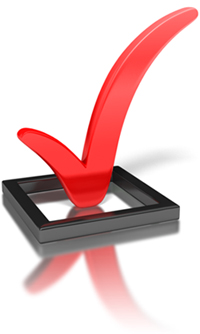In October this year, the NZ Ministry of Health In comparison the 2010 MoH guideline related to contamination caused by manufacture only however this level has been used as the de facto standard regardless of the cause of the contamination. To add further confusion, the Australian guidelines state the presence of methamphetamine at a level of greater than 0.5 micrograms (µg) per 100cm² is considered unacceptable regardless of whether it is use related or due to manufacture. Short answer – it is very difficult to emphatically state the cause of meth contamination. Labs vary in size from a soft drink bottle ‘one pot lab’ through to sophisticated industrial sized labs depositing varying levels of contamination. And it’s interesting that ‘addict based labs’ which are generally small, discrete and highly mobile, accounted for 51.6% of the clan labs detected in Australia during 2013/2014.* In a ‘One Pot Lab’ also known as ‘Shake n Bake’, a two litre soft drink bottle or similar, is used to layer chemicals and precursors which is shaken to cause the required chemical action. It takes around 45 minutes to produce approximately one gram of methamphetamine. As an owner or property manager, you must give a minimum of 48 hours notice for an inspection! This gives tenants ample time to clear away all evidence of use and/or manufacture. To understand the post decontamination level that is applicable for a specific property, Property Managers and owners should contact the local Council in the area the property is located and seek advice from the Environmental Health Officer. This is because the responsibility for the safety of a property rests with Councils (i.e.: Territorial Authorities) around New Zealand and the MoH guidelines are given legal effect via Council powers under the New Zealand Building and Health Acts. Often it is a lack of precursors present in the samples which insurers site as an indication that contamination is use related and therefore deemed to be gradual damage and subsequently the claim is declined. If you have had a meth related insurance claim declined, ask the insurer how the lab results differ between heavy use of meth in a property and one or two episodes of manufacturing meth in a ‘One Pot Lab’. Alternatively MethSolutions has built an extended network of like minded professionals who may be able to assist you with a meth related insurance claim. Please contact us if you would like to discuss this. Source of information: * http://flex.flinders.edu.au/file/39066a68-f6da-400e-9150-6d2f7a5ab899/1/ThesisWright2016.pdf Image courtesy of: https://sourceable.net/meth-testing-standard-property-sales/ So, how easy is it to establish whether methamphetamine contamination is caused by use or manufacture?
So, how easy is it to establish whether methamphetamine contamination is caused by use or manufacture? Given it is difficult to emphatically establish the cause of contamination, if manufacture cannot be categorically ruled out, the precautionary approach would see the lowest level applied under the revised MoH recommendations.
Given it is difficult to emphatically establish the cause of contamination, if manufacture cannot be categorically ruled out, the precautionary approach would see the lowest level applied under the revised MoH recommendations.
Meth Contamination: Use Or Manufacture?
[MoH], released revised recommendations for post decontamination levels of methamphetamine in a property and differentiates between use and manufacture and carpet and no carpet. [Refer table A]


